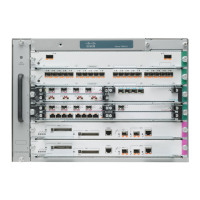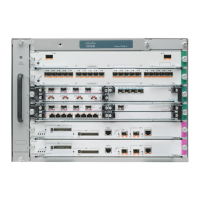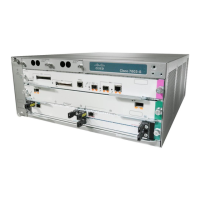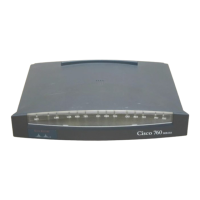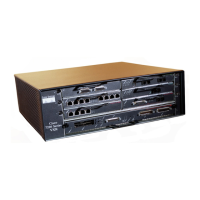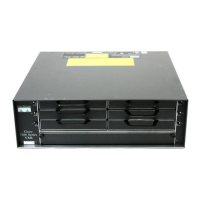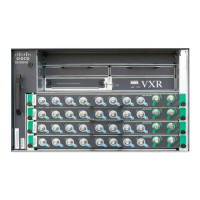10-4
Cisco 7600 Series Router Cisco IOS Software Configuration Guide, Release 12.2SX
OL-4266-08
Chapter 10 Configuring LAN Ports for Layer 2 Switching
Understanding How Layer 2 Switching Works
The trunking mode, the trunk encapsulation type, and the hardware capabilities of the two connected
LAN ports determine whether a link becomes an ISL or 802.1Q trunk.
Layer 2 LAN Port Modes
Table 10-2 lists the Layer 2 LAN port modes and describes how they function on LAN ports.
Note DTP is a point-to-point protocol. However, some internetworking devices might forward DTP frames
improperly. To avoid this problem, ensure that LAN ports connected to devices that do not support DTP
are configured with the access keyword if you do not intend to trunk across those links. To enable
trunking to a device that does not support DTP, use the nonegotiate keyword to cause the LAN port to
become a trunk but not generate DTP frames.
Table 10-1 Ethernet Trunk Encapsulation Types
Encapsulation Function
switchport trunk encapsulation isl Specifies ISL encapsulation on the trunk link.
Note Some modules do not support ISL
encapsulation (see the “Trunking
Overview” section on page 10-3).
switchport trunk encapsulation dot1q Specifies 802.1Q encapsulation on the trunk link.
switchport trunk encapsulation negotiate Specifies that the LAN port negotiate with the
neighboring LAN port to become an ISL
(preferred) or 802.1Q trunk, depending on the
configuration and capabilities of the neighboring
LAN port.
Table 10-2 Layer 2 LAN Port Modes
Mode Function
switchport mode access Puts the LAN port into permanent nontrunking mode and negotiates to convert the
link into a nontrunk link. The LAN port becomes a nontrunk port even if the
neighboring LAN port does not agree to the change.
switchport mode dynamic desirable Makes the LAN port actively attempt to convert the link to a trunk link. The LAN
port becomes a trunk port if the neighboring LAN port is set to trunk, desirable, or
auto mode. This is the default mode for all LAN ports.
switchport mode dynamic auto Makes the LAN port willing to convert the link to a trunk link. The LAN port
becomes a trunk port if the neighboring LAN port is set to trunk or desirable mode.
switchport mode trunk Puts the LAN port into permanent trunking mode and negotiates to convert the link
into a trunk link. The LAN port becomes a trunk port even if the neighboring port
does not agree to the change.
switchport nonegotiate Puts the LAN port into permanent trunking mode but prevents the port from
generating DTP frames. You must configure the neighboring port manually as a
trunk port to establish a trunk link.
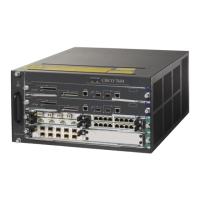
